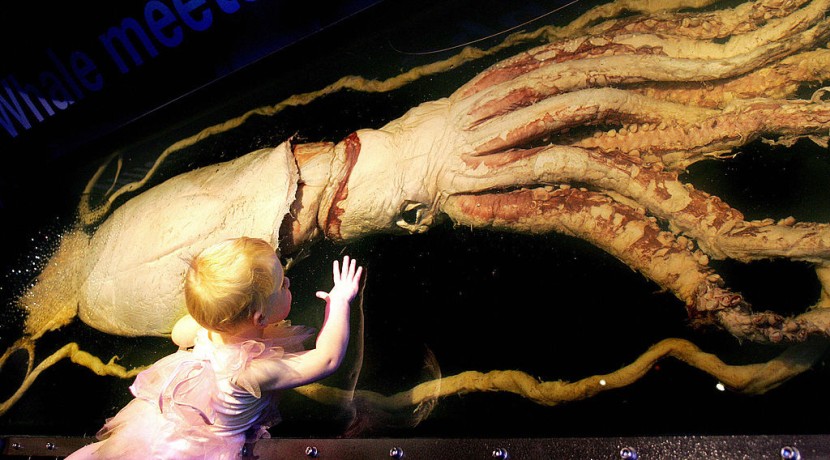
Now scientists want to see what is the biggest squid alive in the ocean as evidence is shoring up literally. Tales of legendary cephalopods of enormous size have been recorded as far as 150 years back.
Scientists Study These Invertebrates
Two species are the leading examples of the legendary animals; one is the giant squid which is the longest, while the colossal squid is the heavier one, reported Live Science.
The giant squid is seen in every ocean and can reach up to 40 and 45 feet from the body's tip to the tentacle end. It is about 600 pounds heavy, said Heather Judkins, an expert from South Florida University at St. Petersberg.
In addition to legendary claims, other new alleged sightings have them up to 66 feet long but not proven, this was said by the Two Oceans Aquarium located in Cape Town, South Africa.
Colossal squid, which lives in Antarctic waters but may venture up to New Zealand, is predicted to reach about 30 to 33 feet (9 to 10 m) long, said scientists is one of the largest squids. It is shorter than the giant squid, capable of weighing up to 1000 pounds, which makes it the heaviest invertebrate alive, remarked Oceana.
Biggest Squid Alive
Such titanic cephalopod invertebrates eat fish and others of their kind. Until they mature, a few animals can eat them, such as the toothed cetacean sperm whale. For these whales, the colossal squid is part of 77% of the whale's diet, told the Museum of New Zealand.
These sea monsters are often unseen, and the depths of the seas where they live are primarily shrouded from human eyes, citing the Smithsonian.
Aristotle and the Roman scholar Pliny, the Elder, in records of the ancient world, noted mention of the creature in ancient times. Based on the Two Oceans Aquarium, the first photo of the enormous cephalopod was taken in 1874.
The photographer Rev. Moses Harvey of Newfoundland captured the image of a dead specimen caught by a fisherman by accident, claimed the Smithsonian.
Other Evidence of Giant Cephalopods
Since finding a live one was next to impossible, researchers had happened that the remains of these giant invertebrates came from floating in the seas. They are washed up on beaches or in the stomachs of sperm whales, said the Proceedings of the Royal Society B, just like the callosal squid by the Museum of New Zealand.
Researchers did not catch a picture of the adult giant squid in its natural habitat until 2004, and the very first video footage of such an adult giant squid in the wild wasn't obtained until 2012.
Likewise, nobody has ever seen an unaffected colossal squid before 2003, according to the Museum of New Zealand. This December, an international adventure to Antarctica could attempt to find and film the colossal squid in the ocean depths for the first time.
Judkins stated that seeing these animals in their natural environment would be amazing. Catching them on camera will be something unprecedented; to see them acting naturally.
Scientists find the biggest squid and the largest invertebrates ever evolved as evidence legends of the Kraken or sea monsters have an actual basis.
Related Article: Scientists Reveal Ancient Egyptian Mummification Is Not for Preserving Their Corpses for Eternity, But Was of More Intricate Purpose
© 2025 HNGN, All rights reserved. Do not reproduce without permission.








